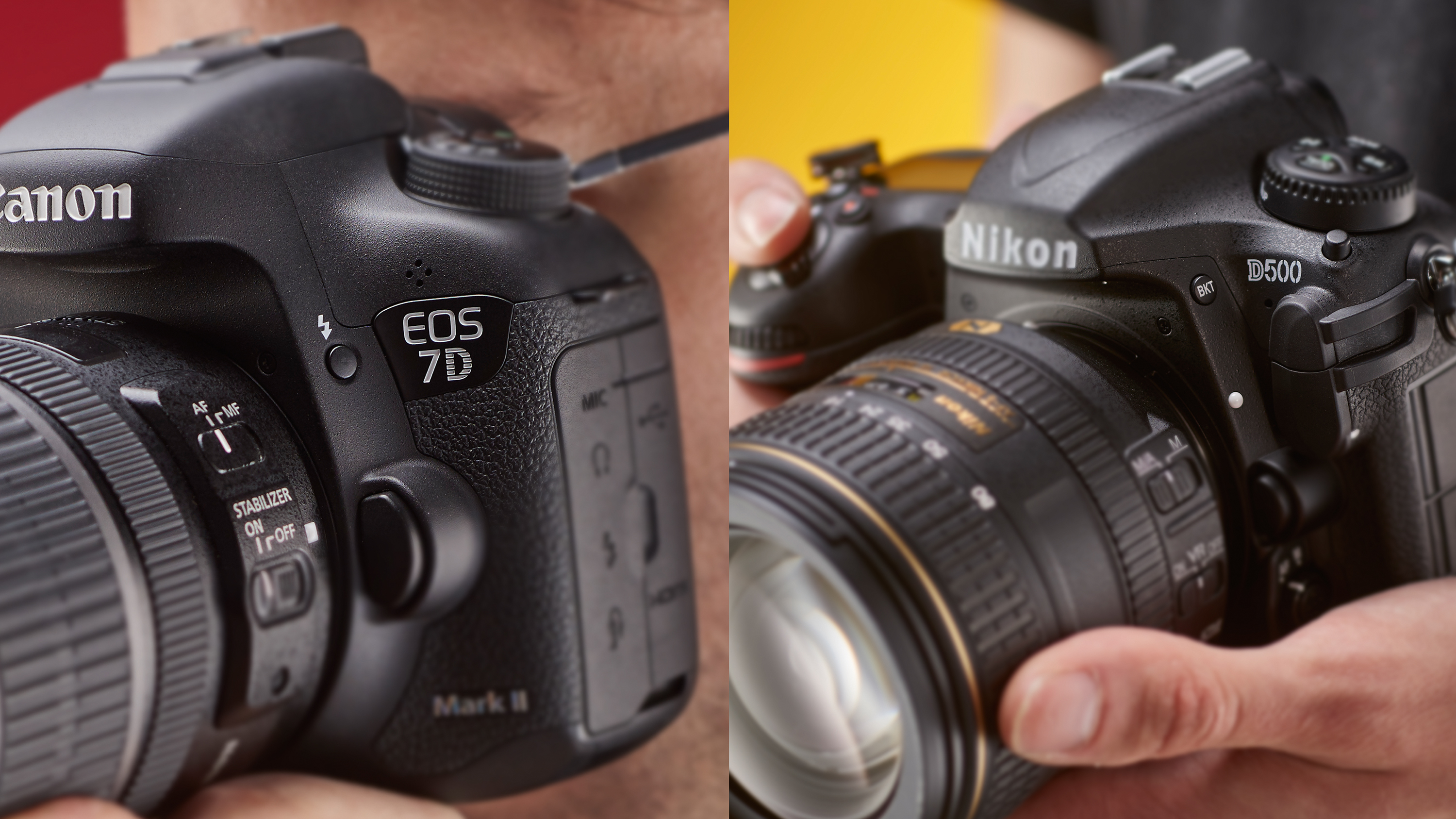Canon EOS 7D Mark II vs Nikon D500
The battle of the APS-C DSLR kings

For absolutely ages, Canon was the only company to offer a really high-end APS-C format DSLR that was designed to appeal to dedicated enthusiast photographers, or to pros who wanted a lighter body with a smaller sensor to give their lenses extra reach. That's changed recently, however, with the introduction of the Nikon D500, which means that the Canon EOS 7D Mark II now has a direct competitor. Our mission here is to see how they compare…
Features
Although the 7D Mark II dates from September 2014, it has a very similar pixel count to the recently launched D500; we're talking 20.2 million versus 20.9 million respectively. The D500 doesn't have an optical low-pass filter, which could give it a slight edge for detail resolution, albeit at enhanced risk of moire patterning.

Sports and action photography is important to the 7D Mark II and D500's target market. Accordingly, both cameras have high-spec autofocus systems with lots of AF points. Nikon has been especially generous in giving the D500 a 153-point system, although only 55 of them are individually selectable: the other 98 are support points. Of the 153 points, 99 are the more sensitive cross-type, and 15 of them function with lens and teleconverter combinations with maximum apertures as small as f/8. Of the 55 selectable points, 35 are cross-type, with nine sensitive down to f/8. Nikon claims the focusing system is sensitive down to -4EV.
Meanwhile, the Canon 7D Mark II has 65 AF points, which are all user-selectable and cross-type. The centre point is a more accurate dual-cross type when it's used with a lens that has a maximum aperture of f/2.8 or larger. With smaller aperture lenses from f/2.8 to f/8, it reverts to a cross-type sensor. The system is claimed to be sensitive down to -3EV.

All this indicates that while the 7D Mark II has more selectable points, the D500 has a more sensitive focusing system, with more AF points that function when teleconverters are used.
A high shooting rate is also useful when you're shooting sport. Despite its more advanced age, the 7D Mark II matches the D500 here, with both cameras able to shoot at up to 10 frames per second with full autofocus and metering functions. The D500 can shoot at this rate for up to 200 14-bit lossless compressed raw files, while the 7D II can only shoot 31 raw files. If you're willing to forgo raw files on the 7D II, you can shoot up to 1,090 JPEGs in a single burst. Swings and roundabouts spring to mind.

Low-light performance is a key area for the Nikon D500: it has a standard sensitivity range of ISO100-51,200. There are also five expansion settings that give a maximum equivalent setting of ISO1,640,000 – an incredibly high figure that beats all other APS-C format SLRs. In comparison, the 7D Mark II's native sensitivity range is ISO100 to 16,000. The two expansion settings give a maximum value of ISO 51,200 – the D500's top native setting.
Sign up for breaking news, reviews, opinion, top tech deals, and more.
It's possible to shoot Full HD video with both cameras, but only the D500 has 4K capability. That's a major plus for the Nikon camera – but focusing in Video or Live View modes relies solely on contrast detection, whereas the Canon camera has faster Dual-Pixel AF technology, which incorporates phase-detection focusing.

One disappointment with the 7D Mark II is that it doesn't have Wi-Fi connectivity built-in. (There is a GPS unit, though.) Nikon, however, used the D500 to introduce SnapBridge, a Wi-Fi system that uses low-power Bluetooth communication to maintain a connection between a paired camera and a smart device at all times. It can also be set to allow 2MP images to be transferred automatically to the photo or tablet – even if the camera is turned off.